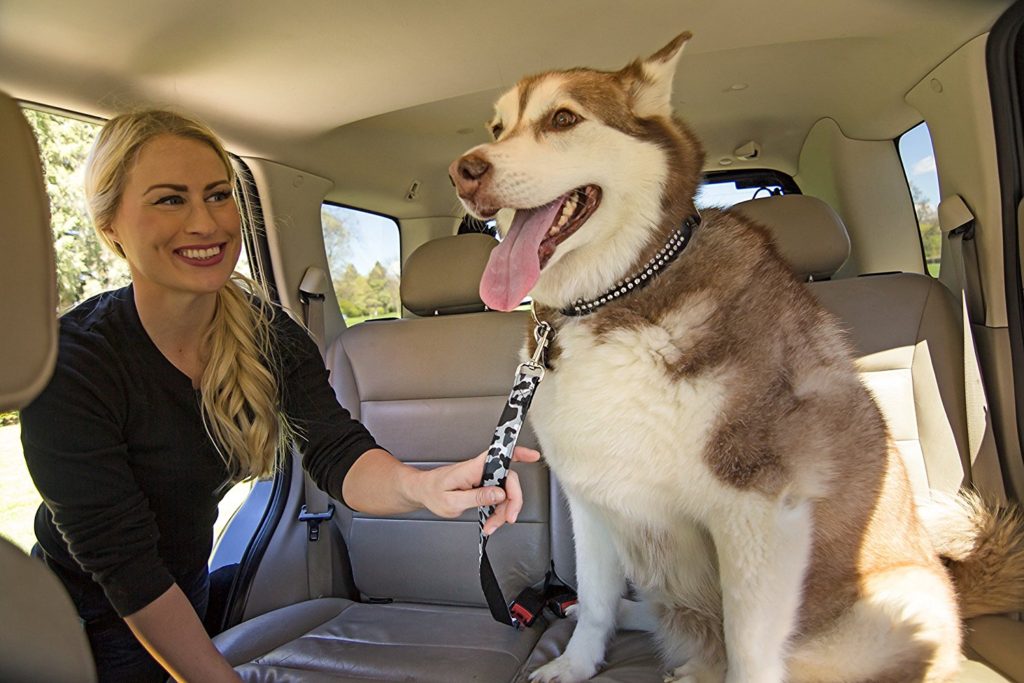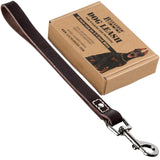Did you know that nearly one in five respondents to AAA/Kurgo survey from 2011 admit to taking hands off the wheel to keep dogs from climbing in front seat?
2011 survey examines habits of people driving with canine companions and potential distractions
78 millions dogs reside in more than 46 million U.S. households, according to the American Pet Products Association, and an increasing number of these furry companions accompany their families on road trips, day trips and even local errands. However, in a vehicle this can mean added distractions for the driver and added dangers for all passengers, including pets. A recent survey conducted by AAA and Kurgo, a leading manufacturer of pet travel products, asked dog owners how often they drive with their dog and examined their habits behind the wheel. The survey results indicated that drivers not only love to bring Fido in the car, but often engage in risky behaviours when man’s best friend is along for the ride.
Motorists frequently bring dogs along, engaging in distracting behaviours
Nearly 6 in 10 (56%) respondents have driven with their dog at least once a month in the past year, however, many participate in behaviours that take their attention away from the road with the most common activity being petting their dog (52 %). Nearly 1/4 (23 %) have used their hands or arms to hold their dog in place while applying brakes, and 19 % have used their hands or arms to keep their dog from climbing into the front seat—creating a situation where they remove at least one hand from the steering wheel.
Other distracting behaviours drivers admitted to include reaching into the back seat to interact with their dog (18 %), allowing their dog to sit in their lap or holding their dog (17 %), giving food or treats (13 %) and 3 % have taken a photo of their dog while driving. These behaviours can distract the driver and increase the risk of a crash. The AAA Foundation for Traffic Safety found that looking away from the road for only two seconds doubles your risk of being in a crash.
Drivers admit dangers of unrestrained pets, but most not using a pet restraint. ( dog seatbelt)
83% of respondents acknowledge that an unrestrained dog in a moving car can be dangerous, but only 16% currently use a pet restraint(dog seatbelt). However, use of a restraint is three times greater among drivers who have heard of situations where unrestrained dogs were injured or caused injury to other passengers in a car crash (32 %) compared to respondents who were not aware of such a situation and still use a restraint (9 %). Using a pet restraint( dog seatbelts) can aid in limiting distractions and help protect pets and passengers.
“Drivers should use a pet restraint system for your dog every time their pet is in the vehicle,” said Jennifer Huebner-Davidson, AAA National, Traffic Safety Programs manager. “A restraint like those offered by Kurgo will not only limit distractions, but also protect you, your pet and other passengers in the event of a crash or sudden stop.”
Calm dogs and lack of awareness top reasons for not using a pet restraint.
More than two in five (42 percent) respondents stated they do not use a pet restraint because their dog is calm and they do not think he/she needs a restraint. However, a calm dog will be thrown with the same amount of force as an active dog in the event of a crash or sudden stop—a danger for all passengers as well as the pet.
“An unrestrained 10-pound dog in a crash at only 30 mph will exert roughly 300 pounds of pressure, while an unrestrained 80-pound dog in a crash at only 30 mph will exert approximately 2,400 pounds of pressure. Imagine the devastation that can cause to your pet and anyone in its path,” said Huebner-Davidson.
Other reasons cited for not using a restraint include: never considered it (39 percent); just take dog on short trips (29 percent); and 12 percent want their dog to be able to put its head out the window.
18% of respondents who drive with a dog in the vehicle also have children under the age of 13 who ride with them. Seven in 10 of these motorists have driven with a child and an unrestrained dog in the vehicle at the same time.
A variety of reasonably priced products are available to keep pets safe and help dog owners reduce potential distractions caused by pets while driving. There have been many recent innovations in this market to make these products more comfortable for the dog and convenient to use for the owner. AAA recommends owners use a dog seat belt system anytime they are driving with their pet—even short trips close to home.

Give your dogs — and Yourself — a Break
Traveling with a dog is a little bit like traveling with a child. Even if you can push yourself to keep going for hours on end to arrive at your destination faster, dogs have different needs. Expect to stop every two or three hours to let them get out, stretch their legs, and do their business. And while you’re at it, enjoy the break. Even if you can keep going, that doesn’t mean you should. People weren’t meant to be driving in a car for 12 hours straight.
Turn off power windows
If you have a car with power windows, it’s quite easy for your dog to accidentally open them with a simple press of their paw. You might think that this is relatively harmless, especially if your pet likes to stick his or her head out in the breeze, but overexcited dogs have been known to jump out of moving vehicles, and simply taking a wrong step could lead to the window being closed on their neck and choking them.
Bring water and a bowl
Dogs need regular access to water. This is vital on a longer road trip, but even if you’re just headed out to the store, it’s smart to bring along. You never know what might happen. The best way to ensure that you always have water on hand is to store a bottle in the car as part of your emergency kit. A bowl is also nice, but in a pinch, letting your dog drink out of your cupped hand is just fine.
You should also know that, regardless of laws in your area, it’s never safe to drive with a dog in your lap, to let them ride in the open area of a vehicle (such as the back of a pickup), or to leave them alone in your car — especially in warmer weather.
Save yourself, and your DOG !

The following information is brought to you by
GoPetFriendly. The goal of these states is not to save the lives of our pets … though it will be a nice side effect. The main focus of the legislation is to protect humans lives – the pet owners’ and everyone else on the road. Unrestrained pets can become a distraction. Distractions cause accidents. In a collision at 50 mph, an unrestrained 10-pound dog will hit you with about 500 pounds of force – more than enough to do serious damage to you and the dog. Just imagine the kind of force a dog Buster’s size would inflict! We have laws that require us to wear seat belts and ensure our children are properly restrained in the car. There are laws to protect us from drunk drivers and people who text, apply make-up, or talking on the phone while driving. Is the requirement that we buckle up our pets really too much to ask?
The resistance to these laws comes from a “big government oppression” mentality. No one likes being told what to do – it rubs us the wrong way. But the evidence is all there … people know the risks, they even agree it’s dangerous, and yet only 16% are restraining their pets. What’s common sense for some is apparently a completely foreign concept to a majority of the population.

After considering the pluses and minuses, we are in favour of pet restraint legislation. Our mission at GoPetFriendly.com is to encourage you to travel with your pets, and we want you to be safe. You’ve heard our motto, “Seat belt for you. Seat belt for your kids. Seat belt for your pets!” Whether you choose a
car harness or a secured carrier, these laws could save your life. They also protect our pets and everyone else on the road – drivers, passengers, pedestrians, and cyclists. The benefits outweigh the imposition.
SUMMARY

At least eight states have laws specifically requiring animals to be secured when being transported in an open area of a vehicle. In some cases, the laws apply only to dogs None of the laws require the animal to be restrained or secured if inside an enclosed part of the vehicle.
Connecticut, New Hampshire, Oregon, and Rhode Island require a dog to be secured or restrained when being transported on some part of the exterior of the vehicle, such as a pick up truck bed. California and Massachusetts require all animals to be restrained or contained when being transported on a load-bearing part of the vehicle, unless the space is enclosed. The laws in Nevada and Washington focus on safety and cruelty to animals, making it a misdemeanor to transport an animal in a vehicle (1) in a cruel or inhuman [sic] manner in Nevada, or (2) in a manner that will jeopardize the safety of the animal or the public in Washington. .......................................................................................................................................................... We hope that we have released a flood of incredible information today:) WELL, what do you think?
Thanks a lot for reading this blog post. If you like it and find it useful pls leave a comment.
Have a good day, tell dog lovers in your neighborhood about us and don’t forget to visit
Leatherberg store right now.
We also have a
dog seat belt on Amazon store, our webpage and soon on our partner store
chewy. I am sure that together with a high quality dog harness 9 dog harness which passed crash tests) it helps to protect your beloved dog.


















